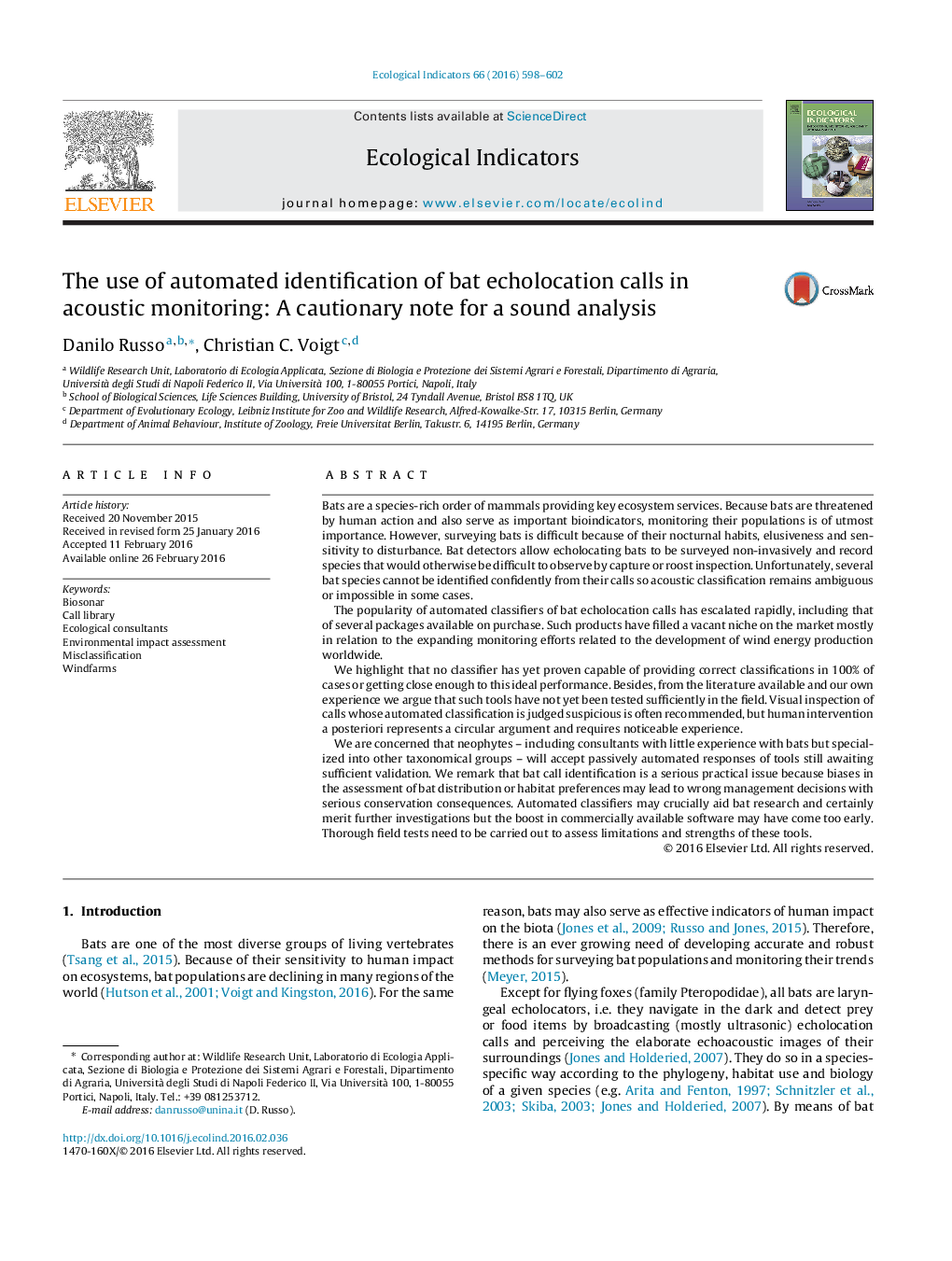| کد مقاله | کد نشریه | سال انتشار | مقاله انگلیسی | نسخه تمام متن |
|---|---|---|---|---|
| 6293554 | 1617136 | 2016 | 5 صفحه PDF | دانلود رایگان |

- Acoustic identification allows echolocating bats to be surveyed non-invasively.
- Automated classifiers of bat calls promise high identification performances.
- Use of classifiers is spreading yet they have not been tested enough in the field.
- Misidentification may ultimately lead to wrong management and serious conservation issues.
- Thorough field tests are needed to assess limitations and strengths of these tools.
Bats are a species-rich order of mammals providing key ecosystem services. Because bats are threatened by human action and also serve as important bioindicators, monitoring their populations is of utmost importance. However, surveying bats is difficult because of their nocturnal habits, elusiveness and sensitivity to disturbance. Bat detectors allow echolocating bats to be surveyed non-invasively and record species that would otherwise be difficult to observe by capture or roost inspection. Unfortunately, several bat species cannot be identified confidently from their calls so acoustic classification remains ambiguous or impossible in some cases.The popularity of automated classifiers of bat echolocation calls has escalated rapidly, including that of several packages available on purchase. Such products have filled a vacant niche on the market mostly in relation to the expanding monitoring efforts related to the development of wind energy production worldwide.We highlight that no classifier has yet proven capable of providing correct classifications in 100% of cases or getting close enough to this ideal performance. Besides, from the literature available and our own experience we argue that such tools have not yet been tested sufficiently in the field. Visual inspection of calls whose automated classification is judged suspicious is often recommended, but human intervention a posteriori represents a circular argument and requires noticeable experience.We are concerned that neophytes - including consultants with little experience with bats but specialized into other taxonomical groups - will accept passively automated responses of tools still awaiting sufficient validation. We remark that bat call identification is a serious practical issue because biases in the assessment of bat distribution or habitat preferences may lead to wrong management decisions with serious conservation consequences. Automated classifiers may crucially aid bat research and certainly merit further investigations but the boost in commercially available software may have come too early. Thorough field tests need to be carried out to assess limitations and strengths of these tools.
Journal: Ecological Indicators - Volume 66, July 2016, Pages 598-602